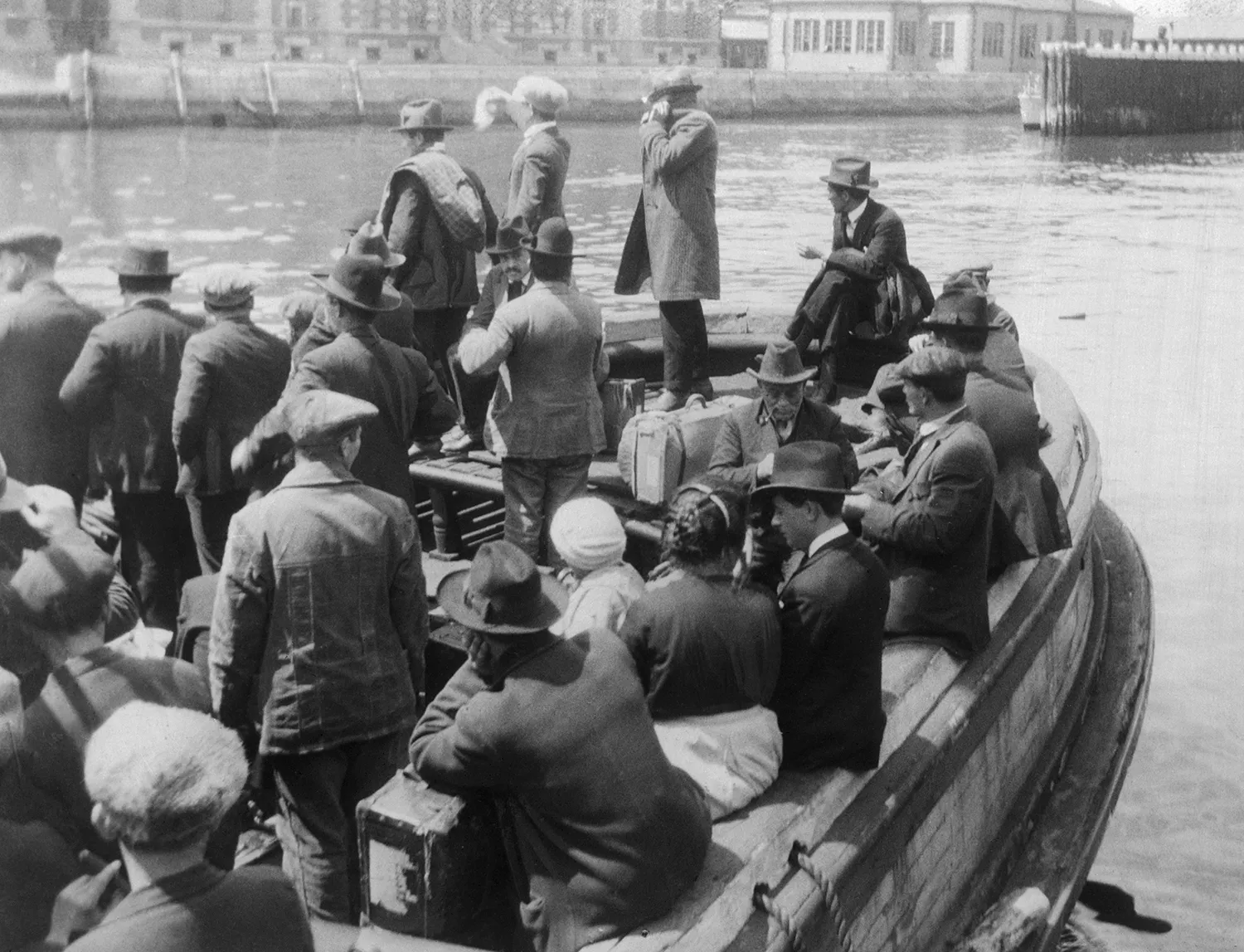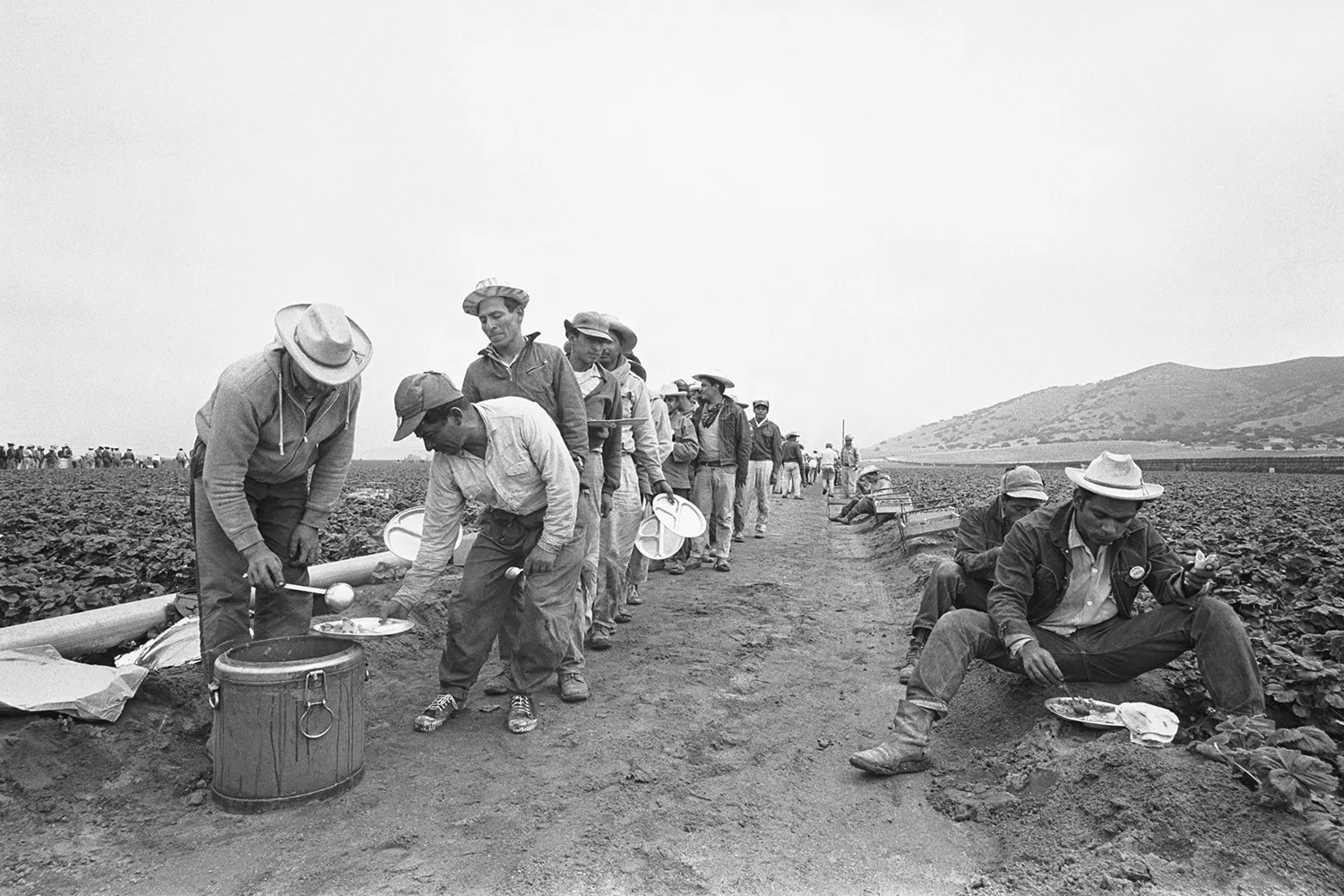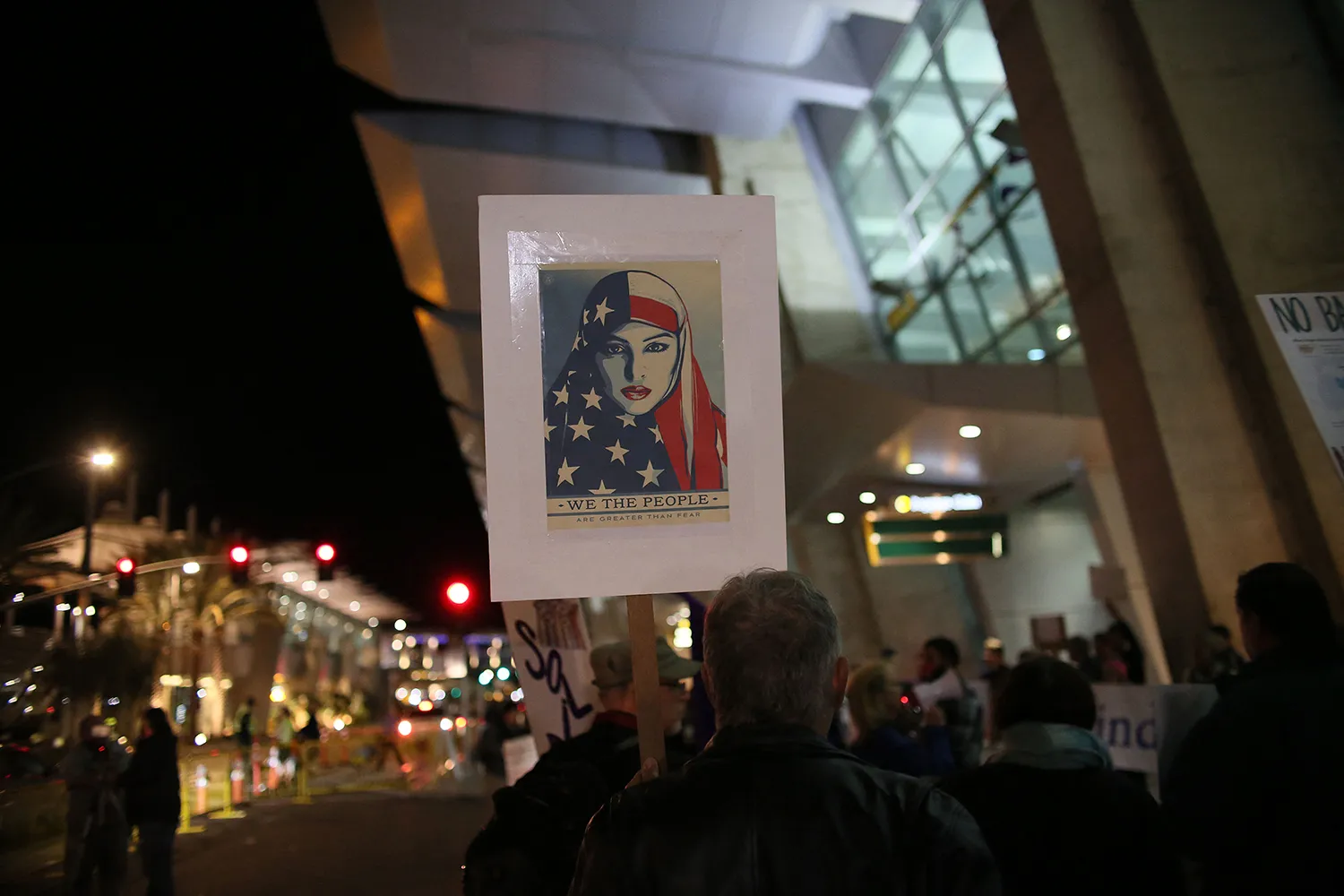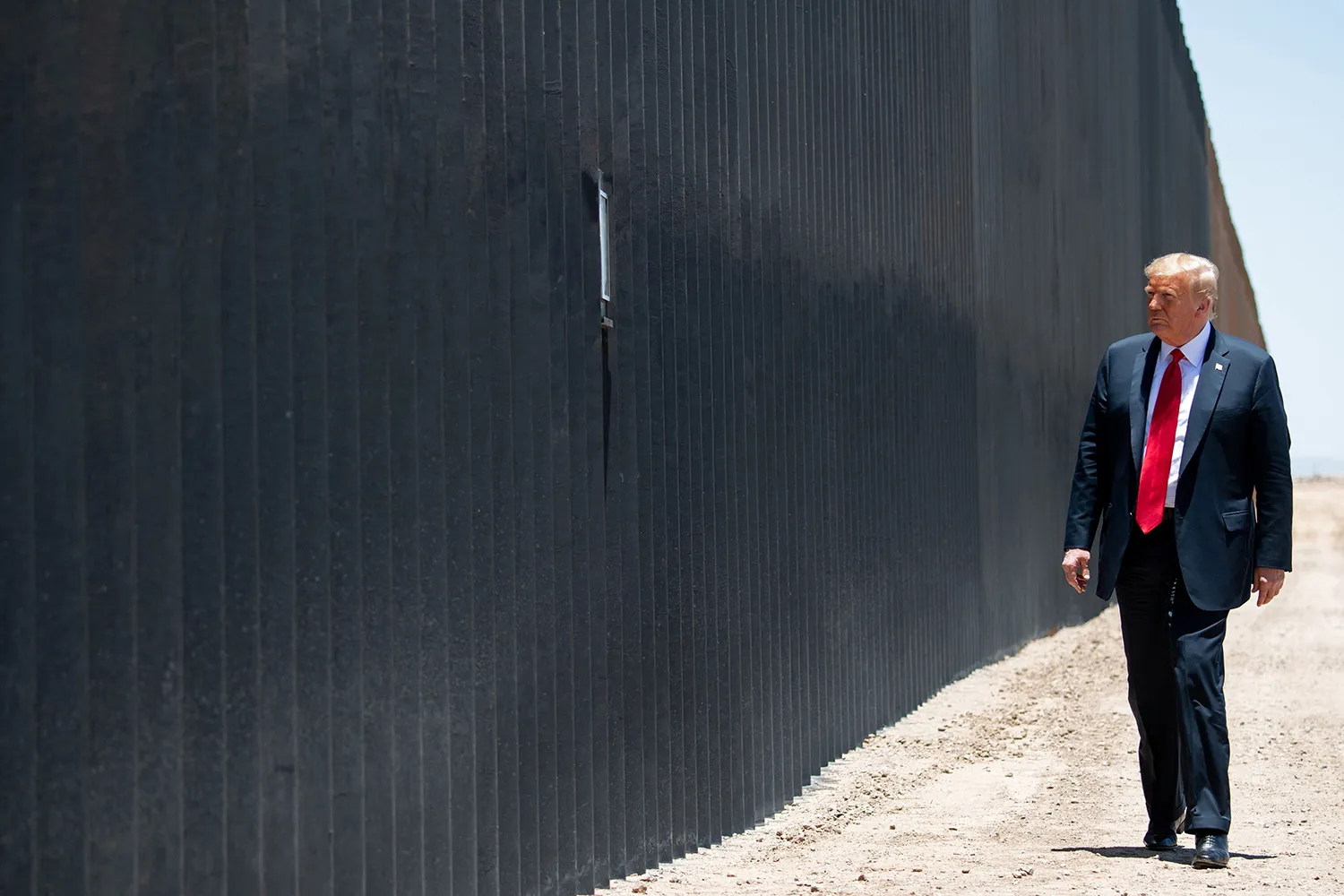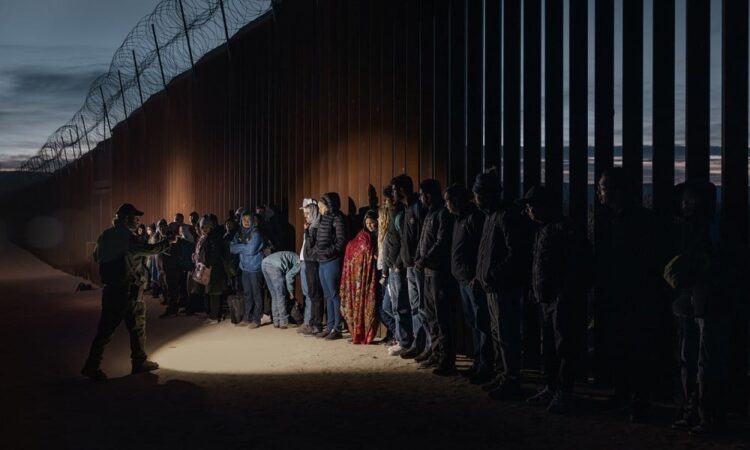
Ahead of the U.S. presidential election this November, many U.S. voters—mostly Republicans and independents—have listed immigration among their top concerns. Last year, authorities registered a record nearly 2.5 million encounters with migrants at the U.S.-Mexico border. Republicans and their presumptive nominee, former President Donald Trump, argue that the United States is experiencing an immigration crisis that is the result of President Joe Biden’s poor management of the issue.
If reelected, Trump has promised to crack down on immigration and launch a mass deportation campaign resembling then-President Dwight D. Eisenhower’s infamous 1954 “Operation Wetback,” the goal of which was to root out undocumented Mexican laborers (although the program indiscriminately expelled many naturalized U.S. citizens as well). Meanwhile, Biden has significantly expanded restrictions on asylum and promoted bipartisan legislation that would grant him greater authority to oversee migration at the border. He has criticized Republicans for their lack of support for the measure in the Senate; many decried it as a “sham.”
Today’s U.S. immigration debate—with politicians on both sides of the aisle promoting restrictive policies and contesting who should be allowed into the country—mirrors that of a century ago, when President Calvin Coolidge signed into law the Immigration Act of 1924.
Months earlier, Coolidge had remarked in his State of the Union address that “America must be kept American.” At the time of its passage, the 1924 law became the strictest immigration policy enacted in U.S. history, significantly reducing the country’s foreign-born population and fundamentally altering its demographics for the next four decades. Lawmakers repealed the act in 1965, concluding that it was both unjust and detrimental to the country’s economic potential.
Now, 100 years later, Washington seems poised to make the same mistake—pursuing restrictive immigration policies based on domestic political grievances that are likely to backfire by dampening U.S. economic growth.
Would-be immigrants, rejected under the U.S. quota law, are deported from the United States circa 1923.Bettmann/Getty Images Archive
The 1924 law reflected growing xenophobia and racism, concerns over rising economic inequality, and a fear of the spread of communism following World War I. “Let us shut the door and assimilate what we have,” South Carolina Sen. Ellison DuRant Smith said during a congressional debate over the act, “and let us breed pure American citizens.”
Such sentiment was widespread at the time. Growing numbers of Eastern and Southern Europeans had been migrating to the United States, and by 1920, foreign-born people accounted for more than 13 percent of the U.S. population. The nativist-inspired 1924 act introduced a nationality-based quota system that limited future annual immigration to 2 percent of the total number of people of certain nationalities who were already living in the United States and capped total immigration at 150,000 people annually. (It did not set quotas for immigrants from the Western Hemisphere.)
Because the act was based on population records from the 1890 census, it disproportionately favored immigrants from Northern and Western Europe compared to their Eastern and Southern European counterparts. It also completely excluded immigrants from Asia, including those who had previously been allowed to immigrate to the United States. (The 1882 Chinese Exclusion Act was still in effect at the time and would not be repealed until 1943.)
Additionally, the law effectively created the new status of “undocumented,” making any immigrant who entered the country without a visa or an inspection—or who stayed past a permitted period—eligible for deportation.
Above all, the act sought to preserve U.S. ethnic homogeneity. After Congress passed the law with overwhelming support, Pennsylvania Sen. David Reed, one of its architects, wrote an article in the New York Times with a headline proclaiming that “America of the melting pot comes to an end.” The law “is merely a recognition of [immigrants’] fundamental dissimilarity from ourselves,” Reed argued.
Immigration fell dramatically after the act went into effect; between 1925 and 1932, an average of roughly 124,000 people immigrated to the United States each year, compared to some 451,000 annually who had arrived between 1915 and 1924. By 1970, five years after the law was repealed, the foreign-born percentage of the U.S. population was less than 5 percent, mostly due to the effects of the quota restrictions and deportations.
By drastically reducing the U.S. immigrant population, the number of low-skilled immigrants dropped substantially, reducing the supply of workers in labor-intensive industries such as agriculture. This diminished the potential for U.S. economic growth.
Braceros take a break for a meal while working in the fields, circa 1963.Bettmann/Getty Images Archive
Even before the 1924 law was replaced in 1965, U.S. lawmakers recognized this fact—and began to tweak immigration policy to meet the economy’s demand for labor. One such fix was the Bracero program. Established in 1942, the program sought to fill the World War II-induced labor shortage by granting short-term contracts to millions of Mexican workers for employment in the U.S. agricultural sector. The program ended in 1964, when Congress moved to broadly overhaul the U.S. immigration system to incorporate more universalist principles; in 1965, a category preference system was created that prioritized family reunification and the admission of skilled laborers. (Prohibitions on migration from Asia had been lifted in 1952.)
Many U.S. lawmakers argued that the new system—which eliminated the national-origin quotas—was fairer and would lead to greater economic prosperity. The Immigration and Nationality Act of 1965 remains the basis for the nation’s immigration system today, welcoming, in then-President Lyndon B. Johnson’s words, “Those who can contribute most to this country—to its growth, to its strength, [and] to its spirit.”
Thousands attend a rally in support of immigration rights on the National Mall in Washington, D.C., on March 21, 2010.Marvin Joseph /The Washington Post via Getty Images
In the decades following the 1965 law’s passage, U.S. immigration policy expanded to grant legal protections to asylum-seekers and refugees by codifying international migration accords into federal law, such as via the Refugee Act of 1980. The last major comprehensive bipartisan immigration reform was passed in 1986, during the administration of former President Ronald Reagan; it granted legal amnesty to an estimated 3 million undocumented immigrants. Years later, President George H.W. Bush passed a smaller reform bill when he signed the Immigration Act of 1990, which increased annual limits on the total level of immigration to the country.
Since then, efforts at immigration reform have produced more congressional gridlock than progress. As a result, most changes to U.S. immigration policy have instead been the result of executive authority. Trump issued nearly 500 executive actions on immigration during his term, and Biden has already surpassed that figure. Neither administration has been successful at passing any major immigration reform.
Today’s debate centers primarily on undocumented migrants—the category introduced by the 1924 act—many of whom are fleeing poverty, violence, and other hardships, and are seeking asylum in the United States. Their arrival en masse has been a focal point of Trump’s and Biden’s presidencies—and exacerbated many Americans’ sense that illegal immigration hurts U.S. workers, burdens taxpayers, and undermines public safety. (The latter fears are not borne out by data, which indicates that immigrants are less likely to commit crimes than people born in the United States.)
Biden and Trump have each sought to restrict immigration, to varying degrees of success. Both administrations exercised Title 42—a 1944 legal provision invoked during the COVID-19 pandemic to allow authorities to quickly expel migrants on public health grounds. Separately, Trump set the lowest annual ceiling on refugee admissions since the creation of the U.S. refugee program in 1980, framing the reasoning for his decision as concern for public health during the pandemic.
The Biden administration raised the ceiling significantly, though it has broadly allocated only a certain number of admissions to each region, creating what are effectively hemispheric quotas. The administration has also used an authority known as humanitarian parole to allow a maximum of 30,000 migrants from Cuba, Haiti, Nicaragua, and Venezuela to enter the country each month. Although it was created with good intentions, the expansion of parole was coupled with new restrictions on access to asylum at the southern border for migrants from those same countries—providing some examples of how elements of the 1924 quota system live on.
Protesters chant during a rally against then-President Donald Trump’s travel ban, seen at San Diego International Airport on March 6, 2017.Sandy Huffaker/AFP via Getty Images
But the prevailing anti-immigrant sentiments of 1924 are perhaps best embodied by both presidents’ so-called travel bans. Trump’s ban temporarily barred the entry of migrants from seven Muslim-majority countries, including Iran, Syria, and Yemen, over terrorism concerns. While the original ban was eventually struck down—and a revised version upheld by the Supreme Court, which Biden later overturned—its initial creation and passage recall an era of immigration policy that overtly discriminated against immigrants based on their national origin. Trump has pledged on the 2024 campaign trail to take such a ban even further, barring individuals from “terror-plagued countries, territories, and places,” such as the Gaza Strip, Libya, and Somalia.
Biden has also passed his own so-called transit ban, which allows the government to deny asylum to migrants who did not previously apply for protection in a third country that they passed through on their way to the United States. (The legality of the policy is still being debated in court.) Biden further expanded asylum restrictions in June via an executive action that allows him to temporarily bar asylum requests when the number of illegal crossings exceeds a daily average of 2,500 for seven consecutive days, with limited exceptions. The new policy, which implements a quota system of its own, entered into effect immediately, as the threshold had already been met.
Some proponents of the new restrictions argue that they could help curb human trafficking by dissuading migrants from traveling to the border. However, immigrant rights advocates denounce the policy, saying it violates U.S. law and endangers asylum-seekers. The measure does provide humanitarian exemptions for some migrants, such as unaccompanied children.
Then-President Donald Trump participates in a ceremony commemorating the 200th mile of border wall in San Luis, Arizona, on June 23, 2020. Saul Loeb/AFP via Getty Images
Today’s hyperfocus on deterring migration—via policies that restrict migrants’ opportunities to gain lawful entry into the United States and thus result in the arrival of far more “undocumented” people—often forecloses discussions about how increasing legal immigration pathways would benefit the economy.
An April 2024 report by the Peterson Institute for International Economics credited increased immigration with boosting U.S. productive capacity and helping to control rising inflation. And according to a 2024 economic outlook by the Organization for Economic Cooperation and Development, “exceptionally large migration inflows” helped boost overall economic growth and productivity in 2023 in several member countries, including the United States.
Undocumented workers benefit the U.S. economy; most work in the informal economy and take jobs that documented workers don’t want, including in industries such as agriculture, food service, maintenance, and domestic service. But the expansion of pathways for legal migration could generate future economic growth by reducing migrants’ barriers to employment—allowing individuals to take jobs in sectors for which their skills are well-suited, rather than facing restrictions due to their immigration status—and increasing their opportunities for economic mobility.
Not only do immigrants support a population that is both aging and living longer, they also help industries fill labor shortages, drive economic growth through consumption, and overcome short-term gaps in skilled industries not met by the native population. (Currently, industries such as hospitality and retail, which offer entry-level jobs, are experiencing unemployment rates greater than many of those that require specialized skills.) The influx of migrants has grown the U.S. labor force—of which foreign-born migrants make up nearly 19 percent—allowing the United States to generate more jobs and outperform its European peers, according to the International Monetary Fund.
Yet, rather than acknowledging the potentially vast economic benefits of a growing immigrant population, Trump remarked at a December 2023 rally that immigrants are “poisoning the blood of our country.” Several other Republican politicians have used similar messaging, employing the term “invasion” to describe the surge in the number of immigrants illegally crossing the border; Florida Sen. Marco Rubio, a potential vice presidential pick, has said that the country “is threatened” by the influx of people. Even some Democrats have vocalized their concerns, with New York City Mayor Eric Adams warning that the ongoing migrant crisis “will destroy” his city.
As Americans prepare to head to the polls in a few months’ time, the immigration policy debate would benefit from a reminder of the economic possibilities that abound from having a large immigrant population. Otherwise, the country may be forced to relearn a tough lesson.

